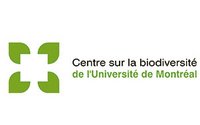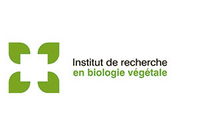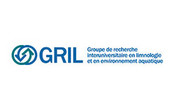Chairs, centres and research groups
The Department has extensive infrastructure and works in co-operation with nationally and internationally recognized teams.
Our Research Centres
Université de Montréal Biodiversity Centre

Set in the heart of the Montreal Botanical Garden, the Université de Montréal Biodiversity Centre is a centre of excellence in the conservation and digitization of biological collections and in biodiversity research and conservation.
Institut de recherche en biologie végétale

Located at the Montréal Botanical Garden, the Institut de recherche en biologie végétale (IRBV) specializes in plant biology research and teaching. Its modern facilities and incomparable plant materials make it an exceptional centre for basic and applied research.
Meet some dedicated researchers, devoted to developing and sharing knowledge in the areas of plant biology, molecular biology and ecology.
Station de biologie des Laurentides
Located in St-Hyppolyte, in the Lower Laurentians, the Station de biologie des Laurentides (SBL) is a university research and training centre for the development of future leaders in ecological and environmental sciences.
A true natural laboratory in a protected environment, the Station attracts students and researchers curious to learn more about terrestrial and aquatic environments. The Station is also a benchmark for sustainable development.
Our Research Groups
Group for Interuniversity Research in Limnology and Aquatic Environment (GRIL)

The GRIL brings together 38 researchers from 8 Quebec institutions and works to improve understanding of lakes and watercourses and their ecosystems.
It is considered one of Canada's top research centres in freshwater ecology, with upwards of 200 graduate students, postdoctoral fellows and research professionals.
Quebec Centre for Biodiversity Science
The Quebec Centre for Biodiversity Science (QCBS) brings together over 120 researchers, including 21 from the Biology Department and numerous national and international partners.
The QCBS aims to facilitate the emergence of an integrated science of biodiversity in Quebec. They offer several measures and human resources to study, discover and use the biodiversity in Quebec in a sustainable way.
Database of Vascular Plants of Canada (VASCAN)
VASCAN is a new database on vascular plants in Canada, created by the Canadiensys network. It has received a 5-year funding from the Canada Foundation for Innovation (CFI).
The mission of Canadensys is to make the information contained in the biological collections of Canadian universities freely accessible, by linking a network of distributed databases compatible with other biodiversity information networks, such as the Canadian Biodiversity Information Facility (CBFI) and the Global Biodiversity Information Facility (GBFI).
During its initial phase, the network will focus on 3 diverse groups of organisms, all with significant ecological and economic importance: plants, insects and fungi. The latter two are also among the least well-known and inventoried groups.
Our Research Chairs
Canada Research Chair in Aquatic Ecosystem Science and Sustainability
Lakes, ponds, rivers, streams, springs, bogs and wetlands are all examples of freshwater ecosystems. These areas offer a number of services that people often take for granted. For example, they can control flooding, purify water, stabilize shorelines and sequester carbon dioxide.As Canada Research Chair in Aquatic Ecosystem Science and Sustainability, Dr. Roxane Maranger aims to protect freshwaters and their ecosystem services by identifying how connections between watersheds and variations in size and shape can cause lakes to be less or more vulnerable to the pressures of development and climate change. She and her research team are developing new approaches to assess lakes at large spatial scales. They want to determine the watershed development thresholds that can lead to abrupt changes in lakes’ abilities to process the carbon and nutrients that influence ecosystem services. Ultimately, they hope to uncover better ways to protect freshwater ecosystems from environmental stressors and develop guidance to support the sustainability of freshwater resources.
Université de Montréal Canada Research Chair in Global Change Ecotoxicology
Rare earth metals and platinum group elements are key ingredients in the technologies and industrial products we use every day—from smart phones to catalytic converters. But we don’t yet know enough about the environmental issues associated with mining them to create strong regulations.
Dr. Marc Amyot, Canada Research Chair in Global Change Ecotoxicology, aims to fill this gap by studying the fate of contaminants in a changing environment. By co-producing knowledge with Atikamekw, Innu, Naskapi and Inuit communities, he and his research team are trying to answer questions like: How do climate-related environmental changes affect the mobility of contaminants? How do contaminants bioaccumulate and move through the food webs of aquatic systems? How do changes in the diets of Indigenous communities affect their exposure to contaminants? And which remediation methods can best mitigate the impact of contaminants in fragile northern systems and southern agroecosystems? The answers they uncover will help inform future environmental regulations.
Canada Research Chair in Plant Functional Biodiversity
As Canada Research Chair in Plant Functional Biodiversity, Etienne Laliberté and his research team are trying to better understand and predict changes in plant biodiversity and the corresponding consequences at the ecosystem level by studying the morphological and physiological adaptations of plants – called “functional traits” – in changing environments.
NSERC/Hydro-Québec Industrial Research Chair in Phytotechnology
The NSERC / Hydro-Québec Industrial Research Chair in Phytotechnology was created to optimize the application of phytotechnology to environmental problems generated by the generation, transmission and distribution of electricity. More specifically, two environmental problems arise from this context: i) hydroelectric right-of-way sites threatened by erosion and colonization by invasive species, and ii) soil and water contamination due to the storage of power poles. The research projects will further scientific knowledge to improve the management of vegetation under hydroelectric rights-of-way and storage sites, and facilitate the transfer and application of phytotechnology to other environmental contexts.
Canada Research Chair in Mitochondrial Evolutionary Biology
Organisms respond to changing environments in two ways:
- By short-term changes during their lifetime (epigenetic and transcriptional modifications);
- Through long-term changes, i.e. heritable evolutionary responses.
While several examples of these phenomena at the level of the nuclear genome have been reported (epigenetic variations in the form of DNA methylation and genetic variations via the evolution of adaptive genes or ORFan genes), the same types of mechanisms for mitochondria and their genomes (mtDNA) remain largely unexplored. This major knowledge gap is surprising given the central role of mitochondria in cellular function, aging and human disease. The Canada Research Chair in Mitochondrial Evolutionary Biology headed by Dre Sophie Breton will address this fundamental gap in our understanding of adaptation and speciation processes through an integrative approach combining epigenomics, transcriptomics, physiology and cell biology to study the ability of mitochondria and their genomes to adapt to changing environments.